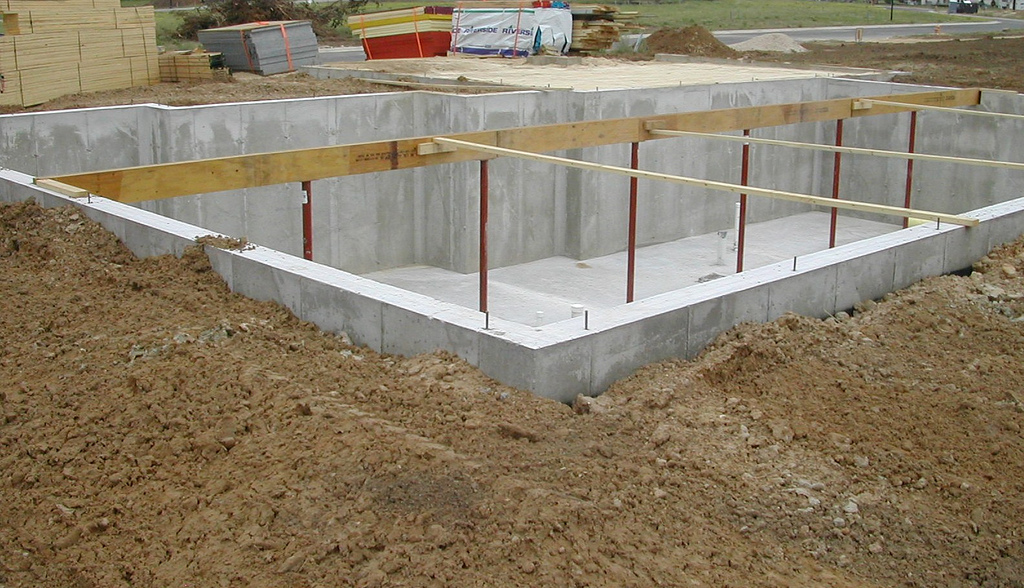Sink Holes and Your New Home
0 Comments | Posted by armchairbuilder in Build Your Own Home, Owner-Builder
We’ve frequently talked about the importance of investigating the soil conditions before purchasing the lot for your new dream home. In addition to the standard checks to see if the soil will structurally support the house, it’s a good idea to investigate the potential for sink holes. You probably heard the tragic story earlier this year about the Florida man who was killed when a sink hole opened up beneath his home. If you think these only occur in Florida, you might want to keep reading.
How Do Sink Holes Form?
About twenty percent of the United States rests over top of subsurface rock that can be dissolved by groundwater. This is sometimes called karst and is made up of rock such as limestone. A sinkhole begins forming when rainwater seeps into the ground, becomes acidic by absorbing carbon dioxide, and comes into contact with the limestone, or similar bedrock. The slightly acidic water dissolves the rock over time creating voids. These voids can get larger over time which requires the soil above to span greater distances until finally, it fails. The resulting failure shows up as a sink hole in the ground surface.
Sink Holes by State
Millions of dollars are spent each year in the U.S. to repair damage to structures and roads caused by sink holes. So it helps to identify the locations that are more susceptible to unstable karst surfaces in hopes to minimize the damage. Here is a list of states that have shown sink hole potential (in no particular order)…
Main, Vermont, Massachusets, New York, Alabama, Virginia, Pennsylvania, West Virginia, Indiana, Kentucky, Tennessee, Georgia, Florida, Minnesota, Illinois, Missouri, Iowa, Ohio, Michigan, Wisconsin, Kansas, Nebraska, South Dakota, Wyoming, Montana, Oklahoma, Texas, New Mexico, Arizona…
Warning Signs
Are there any early warning signs that indicate a sink hole may be coming? Here are some symptoms to look out for that signal a potential sink hole is forming below.
- Fresh exposures on objects in the ground. Meaning, more of the object is now showing that was previously covered by soil. Examples include foundations, mailbox posts, trees…etc.
- Doors and windows that stick
- Sagging or slanting trees or posts (i.e. deck, fence or mailbox posts)
- Structural cracks in walls or floors
- Ground surface with large cracks forming
- Small conical holes that show up in the ground over a short period
Keep in mind, none of these items alone indicates a sink hole is forming. Settlement and sticking doors are common in and around a home. Much like an illness, several symptoms will be present when you have a particular ailment.
Investigate Prior to Purchasing Building Lot
There are some great resources out there to help you better understand a particular location’s potential for sink holes. We’ve mentioned in the past that a geotechnical engineer will help you review potential lots for possible subsurface conditions. This person will be knowledgeable about the soils in the area of your particular lot and should have some knowledge about the potential for sink holes in your area. To learn more about how a geotechnical engineer can help you build a quality home, check out this article titled, Soils Engineer.
Another great resource for anyone looking at potential property to purchase is the U.S. Geological Survey (USGS). This bureau of the U.S. Department of the Interior is a fact finding research organization that helps identify natural hazards in the United States. According to the bureau, “USGS works with many partners to monitor, assess, and conduct targeted research on a wide range of natural hazards so that policymakers and the public have the understanding they need to enhance preparedness, response and resilience.” Find out more about the USGS and how they can help you identify possible hazards at their website.
One other place to go to for information about potential sink holes in your area is the local building department. This group is paid for by the local taxpayers and are there to serve the public. And since they are on local building sites daily, they may have some information about the potential for sink holes based on the recent past.
Before purchasing your new dream home property, you may also want to talk to your local home insurance agent. They should be able to tell you what the additional premium will be to obtain coverage for sink hole damage.


